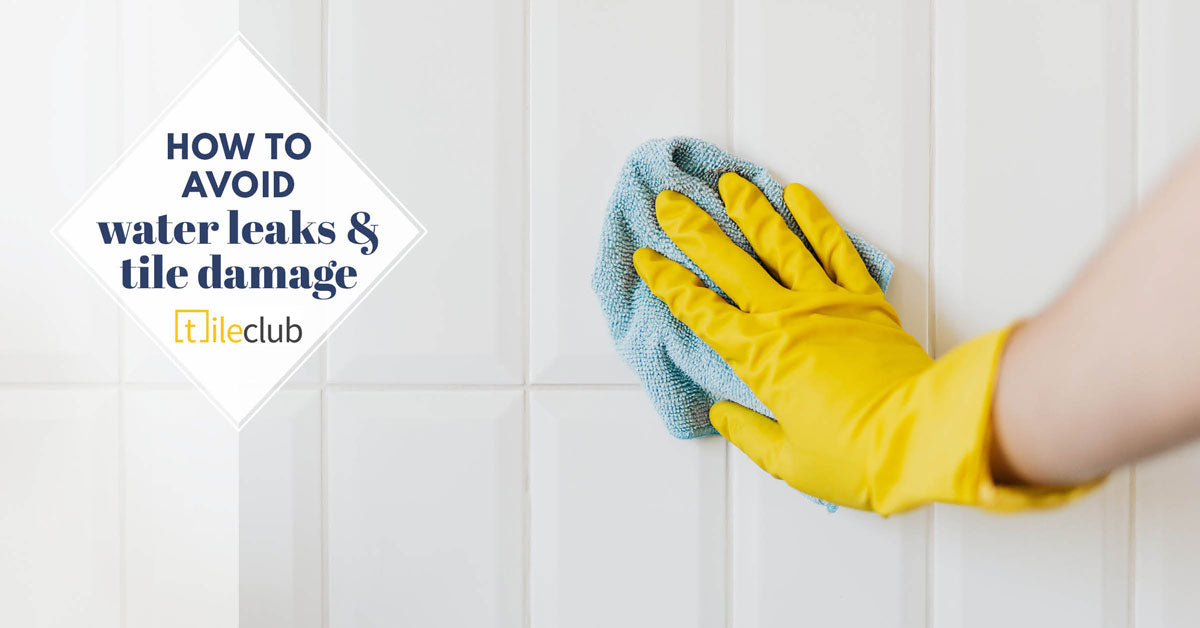
How to Avoid Water Leaks That Can Damage Tiles
|
|
Time to read 3 min
|
|
Time to read 3 min
Written by Renee Jeanne
Water leaks are a real hassle in more ways than one. The damage they cause is a costly headache, and they happen more often than one might expect. In fact, data from the Environmental Protection Agency reveals that the annual waste produced by household leaks amounts to 1 trillion gallons worth of water annually. This not only adds significantly to utility bills — it can also do some long-term harm to your home's gorgeous tiling.
Common Sources of Water Leaking in the Home
Before going into how the damage happens, something every homeowner must know is how to even assess or identify sources of water leakage. It's easy to spot leaks if they're big, though that often spells great damage from the source or a long-term leak that has built up over time. It should be easy enough to spot flooding from broken appliances, such as your dishwasher or washing machine. If your walls, ceilings, or windows have some spaces or deep cracks, water could seep through them whenever it rains.
The common types of leaking to keep an eye out for, though, are those you may not see immediately. These include toilet leaks, faucet leaks, and broken pipes in your plumbing. You can check your monthly water usage to check for any discrepancies, or monitor your meter before and after known water use. And, as outlined by HomeServe Living, damp patches are a telltale sign of water leaks in your home. You should inspect radiators, pipes, water tanks, ceilings, paint cracks, and swollen woodwork for leaks because these are few of the most common areas where they happen.'
How Water Damage Affects Your Tiles
Make sure your beautiful new tiles have the longest life by installing them on a clean, dry subfloor without water damage.
Once you've spotted your leak, it's time to assess the damage. Check how damp the tiles are, and check the borders for each tile to see if it's loose. Even if you used a non-porous tile material, the grout surrounding each tile may be affected by water damage - although it can be minimized by regularly sealing tiles and grout. Based on a guide from Hunker, you'll want to check for any weaknesses in the grout since those will end up cracking or losing their adhesive, putting your subfloor at risk of damage as well.
If you've got other materials such as wood, laminate, or vinyl, you might want to make sure they haven't buckled. These materials can absorb water, creating an unstable surface for tiles or other flooring. Make sure you are installing new tile over subflooring that has not been damaged by water - not only can a damaged subfloor harm your new tiling job but it also puts you at risk of mold, mildew, and bacterial growth from moisture trapped in the layers. As those harmful growths settle under your floating tiles, your home also becomes more open to rot and pests.
See More: Advantages of Wood-Look Flooring vs. Hardwood
What You Can Do to Avoid Water Damage: Fixes and Prevention
Whether or not you are at the point where you simply need to swap out your tiles, it can help you to know some fixes that can protect your tiles from water damage. You should also learn some anti-leak measures, like replacing your toilet flappers, putting epoxy putty over cracked or weakened pipes, or clearing out debris from the gutter.
As for fixing the tiling, first make sure to seal all your grout lines to prevent more damage from seeping between your tiles. For the tiles themselves, make sure you check underneath any loose ones so you can replace the subflooring or drywall if it's already waterlogged. Clean up your tiles if they are salvageable and replace their adhesive. If there is already a presence of mold, stick to the guidelines set by the Federal Emergency Management Agency and start out by cleaning a small patch before moving forward. This is to ensure that your health isn't on the line in the event that the growth is more severe than you might have initially thought.
Preventing a problem like this mostly relies on the good maintenance of your water sources. Always be mindful of where water leaks can come from and avoid delaying any repairs. Another good rule to follow is making sure to clean up any spills or pools of water as soon as possible, no matter how small they may be. Lastly, water damages on tiles can be further prevented with proper installation. It would be best to seek a professional’s help, as they have the expertise to ensure durability and protection for your tiles from the get-go.
You can also check out our guide on waterproofing your shower to ensure you avoid water damage and leaks in the first place!


